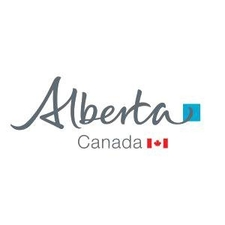73M
Type of resources
Topics
Keywords
Contact for the resource
Provided by
Formats
Representation types
Update frequencies
status
-

All available bathymetry and related information for Caribou Lake were collected and hard copy maps digitized where necessary. The data were validated against more recent data (Shuttle Radar Topography Mission 'SRTM' imagery and Indian Remote Sensing 'IRS' imagery) and corrected where necessary. The published data set contains the lake bathymetry formatted as an Arc ascii grid. Bathymetric contours and the boundary polygon are available as shapefiles.
-

All available bathymetry and related information for Caribou Lake were collected and hard copy maps digitized where necessary. The data were validated against more recent data (Shuttle Radar Topography Mission 'SRTM' imagery and Indian Remote Sensing 'IRS' imagery) and corrected where necessary. The published data set contains the lake bathymetry formatted as an Arc ascii grid. Bathymetric contours and the boundary polygon are available as shapefiles.
-

All available bathymetry and related information for Winefred Lake were collected and hard copy maps digitized where necessary. The data were validated against more recent data (Shuttle Radar Topography Mission 'SRTM' imagery and Indian Remote Sensing 'IRS' imagery) and corrected where necessary. The published data set contains the lake bathymetry formatted as an Arc ascii grid. Bathymetric contours and the boundary polygon are available as shapefiles.
-

All available bathymetry and related information for Caribou Lake were collected and hard copy maps digitized where necessary. The data were validated against more recent data (Shuttle Radar Topography Mission 'SRTM' imagery and Indian Remote Sensing 'IRS' imagery) and corrected where necessary. The published data set contains the lake bathymetry formatted as an Arc ascii grid. Bathymetric contours and the boundary polygon are available as shapefiles.
-

A digital grid of the subcrop edge of the Joli Fou Formation, originally modeled from borehole data and adjusted to present-day and paleo river erosion. Values in the grid correspond to areas where the unit is present (denoted by the number '50'), or where it is absent (denoted by the null value '-9999'). The grid is generated at a 250 m cell-size resolution, based on information as recent as 2003.
-

A digital grid of the top of the bedrock surface, originally modeled from borehole data and adjusted to present-day river erosion. The grid is generated at a 250 m cell-size resolution, based on information as recent as 2003.
-

A digital grid of the top of the Clearwater Formation, originally modeled from borehole data and adjusted to present-day and paleo river erosion. The grid is generated at a 250 m cell-size resolution, based on information as recent as 2003.
-

All available bathymetry and related information for Winefred Lake were collected and hard copy maps digitized where necessary. The data were validated against more recent data (Shuttle Radar Topography Mission 'SRTM' imagery and Indian Remote Sensing 'IRS' imagery) and corrected where necessary. The published data set contains the lake bathymetry formatted as an Arc ascii grid. Bathymetric contours and the boundary polygon are available as shapefiles.
-

The dataset contains the results of analyses of surface water samples collected by AGS in the summer of 1999. Three lakes, three creeks, one stream and two rivers were sampled as part of a water sampling program carried out by AGS in the Athabasca Oil Sands in-situ area of Alberta. This area extends from approximately 55.34 degrees north latitude to 55.96 degrees north latitude, and 110.5 degrees west longitude to 111.8 degrees west longitude. The datum is NAD83. The dataset contains information on laboratory measured pH and conductivity, major, minor and trace element concentrations, as well as stable isotope ratio values of oxygen and hydrogen. AGS staff collected the samples using a discrete sampling method. The sample bottle was dipped into the surface water body and partially filled with water, rinsed and the water was discarded. The bottle was then filled and capped. The sample was subsequently filtered on site using a 0.45 micron filter. A sample was acidified for minor and trace-element analysis. Separate samples were collected for stable-isotope analysis. The major, minor and trace-element concentrations were determined by Norwest Labs of Edmonton. The stable isotope values were determined by the University of Calgary stable-isotope lab. The data are as they were received from the laboratories. A change in focus for the second year of the program meant much of the data were not included in the final report, and so were not interpreted to any extent. The data have not been processed or modified.
-

All available bathymetry and related information for Winefred Lake were collected and hard copy maps digitized where necessary. The data were validated against more recent data (Shuttle Radar Topography Mission 'SRTM' imagery and Indian Remote Sensing 'IRS' imagery) and corrected where necessary. The published data set contains the lake bathymetry formatted as an Arc ascii grid. Bathymetric contours and the boundary polygon are available as shapefiles.
 Arctic SDI catalogue
Arctic SDI catalogue